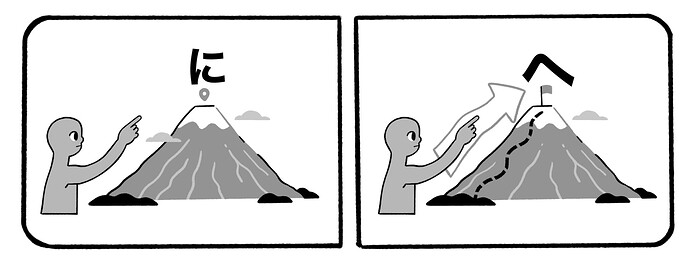I’m specifically talking about the meaning of describing the location one moves towards. This is important because に can also mean more (although similar) things.
It seems to me that it’s unimportant which one you use. Even Bunpro’s own explanation of へ says that they’re used interchangeably. It seems that へ is just a more polite version since it emphasizes the distance/effort one had/has to endure. に just emphasizes the destination itself. So the only difference is just emphasis, and it doesn’t seem to matter much.
So can they be used interchangeably?

